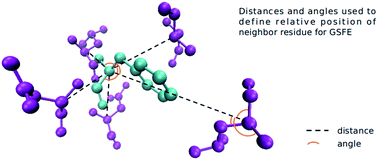A simple neural network implementation of generalized solvation free energy for assessment of protein structural models
Abstract
Rapid and accurate assessment of protein structural models is essential for protein structure prediction and design. Great progress has been made in this regard, especially by recent application of “knowledge-based” potentials. Various machine learning based protein structural model quality assessment methods are also quite successful. However, performance of traditional “physics-based” models has not been as effective. Based on our analysis of the fundamental computational limitation behind unsatisfactory performance of “physics-based” models, we propose a generalized solvation free energy (GSFE) framework, which is intrinsically flexible for multi-scale treatments and is amenable for machine learning implementation. Finally, we implemented a simple example of backbone-based residue level GSFE with neural network, which was found to have competitive performance when compared with highly complex latest “knowledge-based” atomic potentials in distinguishing native structures from decoys.



 Please wait while we load your content...
Please wait while we load your content...